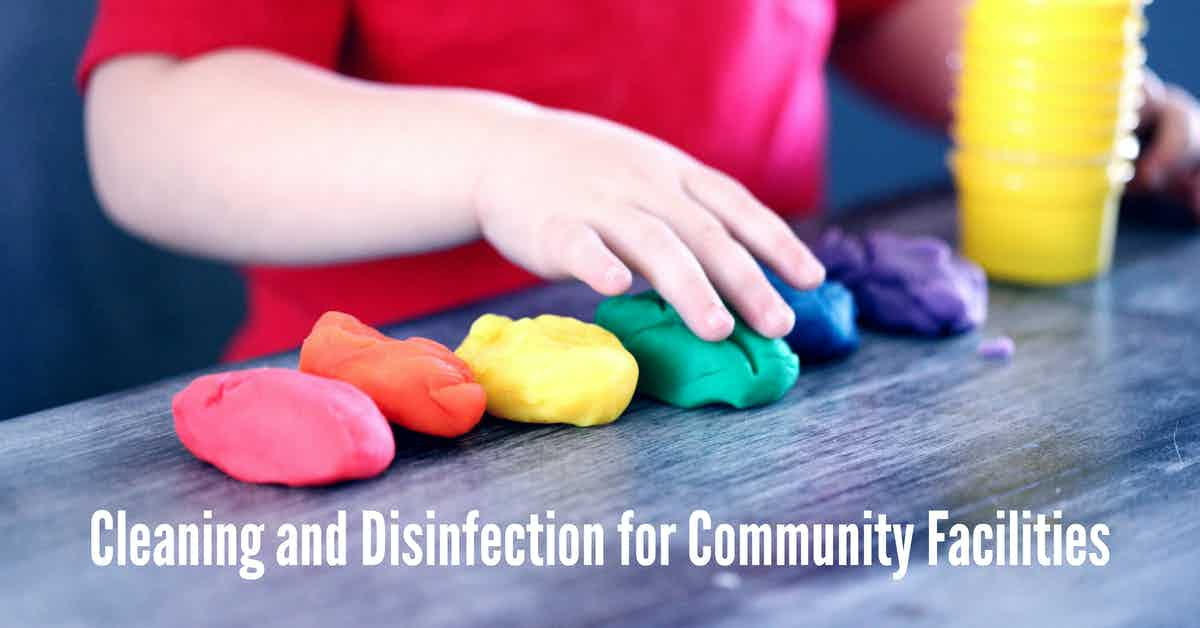Community--non-healthcare affiliated--facilities, such as schools, various types of businesses, and daycare centers, are either open or preparing to open shortly with the intent of remaining so for the duration of this public health emergency, which means strict cleaning and disinfection guidelines must be followed.

Cleaning and Disinfection Guidelines for Schools, Businesses, and Daycare Facilities
Non-healthcare community facilities--publicly accessible buildings that do not house people overnight--are actively serving the public or planning to return to some form of activity very soon.
Further, some businesses currently closed had previously opened, only to be shut down again as a response from Sacramento due to rising COVID-19 cases, positive test results, and deaths medically associated with the virus.
For currently operating facilities and businesses eager to return to an operational status once the restrictions are rescinded, adhering to specific guidelines that include enhanced cleaning and disinfection protocols will help ensure future closures are avoided.
In general, guidance will fall under one of two distinct categories:
- Cleaning for health, and;
- Cleaning in response to likely exposure.
Guidance for Cleaning and Disinfecting Public Spaces
When cleaning a community facility for health where no suspected exposure to the coronavirus has occurred, the following steps are recommended:
- Develop a Plan - A plan that focuses on facility hygiene and occupant health must include guidelines for cleaning and disinfecting areas of a building that are regularly occupied within the last seven days, what tools and products are appropriate for the surfaces and occupants in that section of the building, and how the surfaces should be cleaned and disinfected, with priority given to high-contact surfaces.
- Implementation - Implementation of cleaning and disinfection standard operating procedures should always begin by removing physical clutter, then cleaning visibly soiled surfaces with a commercial-grade soap-based detergent. The surfaces can then be effectively disinfected using an EPA-registered product--preferably one also approved by GreenSeal for occupant safety. Regardless, ensure all service providers are trained in product handling, application, disposal, and accidental exposure methods that follow manufacturer recommendations on the label or safety data sheet.
- Maintain & Revise - First, protect the health and safety of your service providers by implementing strict PPE and handwashing protocols. Second, train all service providers on proper cleaning and disinfection practices that focus on eliminating surface and room cross-contamination. Revise standard operating procedures and training as necessary.
In the event a section of a facility is exposed to a person carrying the coronavirus, the following course of action is recommended:
- Close off the area suspected of contamination for at least twenty-four hours.
- During the closure, increase ventilation into the area to disperse airborne particles.
- Ensure cleaning service providers are trained in proper cleaning and disinfection procedures with every piece of equipment and product that will be taken into the closed-off area with them.
- Have all service providers that will be entering the area put on appropriate PPE before entry.
- Start by cleaning the area top to bottom with a commercial-grade soap-based detergent and microfiber.
- Disinfect the area with an EPA-registered disinfect product, ensuring the manufacturer recommended laytime is observed for COVID-19 eradication.
- Ventilate the area for as long as possible, up to seven days if practical.
- After seven days of quarantine and no human entry, additional cleaning and disinfection requirements are not necessary.
- Consider implementing additional disinfection services, including electrostatic disinfection to properly coat difficult to clean furniture, or have the furniture removed to a secure location for decontamination.
References & Resources
- Cleaning and Disinfection for Community Facilities
- Guidance for Cleaning and Disinfecting
- COVID-19: Best Practices On Deep Cleaning And Disinfecting During A Facility Closure
Takeaway
Achieving and maintaining a fully operational status for community facilities is a challenge that can be met with diligence, patience, and proven cleaning and disinfection practices focused on occupant health.
It is imperative that any potential exposure to infected persons be reported and acted upon immediately to avoid further spread, contamination, and potential facility closure.
Additionally, only trained personnel should be allowed to enter and clean the contaminated portion of the facility to avoid harming themselves and others.
Outsourcing is a proven method for ensuring the highest standards of cleanliness and safety are adhered to, especially in challenging environments occupied by vulnerable demographics.
If you would like more information regarding the effectiveness of high-performance infection prevention and control measures, or if you would like to schedule a free, no-obligation onsite assessment of your facility's custodial needs, contact us today for a free quote!
In Bakersfield, CA, call (661) 437-3253
In Fresno, CA, call (559) 206-1059
In Valencia CA, or Santa Clarita CA, call (661) 437-3253
In Palmdale, CA or Lancaster, CA, call (661) 371-4756

